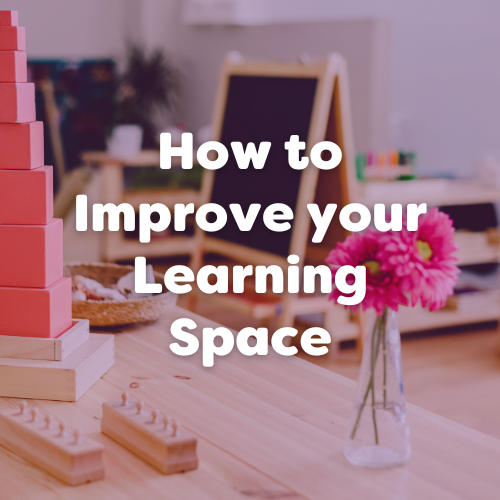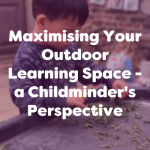Studies have demonstrated that students are less successful without a proper learning space. This includes behavioral or academic performance loss. In this blog we will review the importance of a proper learning environment. Highlighting practical tips and factors to consider when creating your learning space. We will also introduce our free room design service! This service is designed to make building a school environment stress-free.

Why is a Learning Space Important?
A well-designed learning space is crucial as it has a significant impact on learning, both positively and negatively. Children in a positive learning environment have been shown to be more motivated and engaged which contributes to improved concentration, retention of information and ultimately, increased academic success. Conversely students in a “poor” and ineffective learning space find it harder to absorb information and stay engaged with teaching. With this in mind let’s consider some key factors that make an effective learning space.
Practical Tips to create an effective Learning Space
Research has found that several factors in a learning space can affect learning ability including seating, noise, light and even colours. To create an effective learning space, consider the following:
Colours vs Neutrals
- Colours can play a key role in influencing concentration and general feelings. For example blues and greens are linked to calmness and enhanced focus whereas red is associated with both creativity and also stress.
- Research has also suggested that too much colour can contribute to cognitive overload and a feeling of being overwhelmed. These particular studies therefore indicate that neutral tones are the better choice for a classroom.
Consider trying a few options in your setting perhaps by zone to see where your students are the most effective learners.


Indoor vs Outdoor space
- A natural & outdoor environment has been shown to boost mood and reduce feelings of stress and anxiety. Where possible it is recommended to take learning outdoors, particularly in early years’ settings. This could mean taking curricular lessons outside or introducing elements of forest school and encouraging children to learn from nature.
- On the flip side an indoor learning space also offers advantages that perhaps cannot be achieved with outdoor learning. For example, indoor spaces can be used more effectively to create specific learning zones that motivate children and support development.
Both indoor and outdoor spaces should be considered for your setting to offer children diversity and a change of scenery to spark an interest in key topics.


Lighting
Natural light is proven to be the best option for light by far. With this in mind, consider taking advantage of natural light where by possible by choosing rooms with access to sunlight and positioning desks near or facing window.
If natural light is not readily available to your space then artificial lighting needs to be considered and carefully selected. Avoid using fluorescent lamps for example as these cause glare and tiredness which is not conducive to effective learning.
Noise
Naturally, noise levels are a key factor to consider. Whilst it is proven that some degree of background noise is actually a positive contributor to learning, more often than not, noises act as a distraction in the classroom. Consider minimizing background noise or amplifying the teacher’s voice to create a more effective learning space.
Furniture and Configuration
Finally and arguably the most important element to consider is the furniture. What furniture do you have? How is it placed? When it comes to picking furniture to create an effective learning space, factors such as comfort, durability, flexibility and safety are key. For extra advice on selecting the right furniture for your setting, why not visit our dedicated blog How to Pick the Right Early Years Furniture.
Configuration of your chosen furniture is also a key consideration as the space needs to be practical for both students and teachers. This means considering sight lines from seats, flexibility for individual and group work and zoned areas to focus on specific areas of learning.
Creating an effective Learning Space: using a Room Design Service
The task of setting up your learning space to tick all the aforementioned considerations AND have a positive impact on children’s learning can be daunting. A great solution is using a free room design service.
Overview of the EYR room design service
The EYR room design service takes into account your specifications and generates you with a 2D and subsequently, 3D drawing of your room with the suggested products and layout all done for you.
How it works
- In our complimentary service, we start off by asking a few questions about your space. Things such as the size, the ages of the children that occupy it, challenges with the space, key themes and preferences are all explored in this questionnaire.
- This questionnaire may or may not prompt a call with our dedicated team to clarify a few points around your answers.
- Next you will receive your Computer-Aided Design (CAD) pack. This will contain 2D and 3D images of your space with key features specified in your questionnaire answers, selected furniture pieces and staging along with a quote for the pieces included.
- If you have any amendments then this will be taken into account until we provide a CAD pack you are happy with. Everything until this point is free!
- Once you are happy with the design then you will receive your invoice and delivery will be arranged. Unlike other services, the EYR service has no minimum spend or hidden costs. Installation or rubbish collection fees meaning the price you pay is purely for the furniture you buy.

How to access the service
Accessing the service is easy! Simply select the room design option on our website and head to the questionnaire to submit your enquiry.








